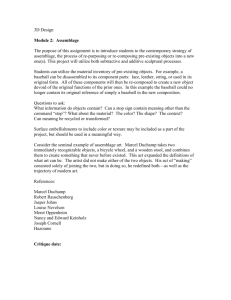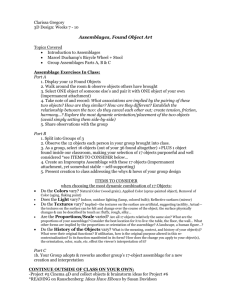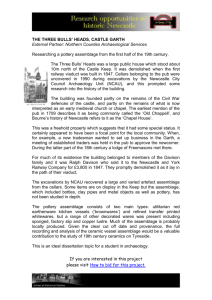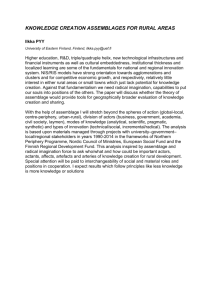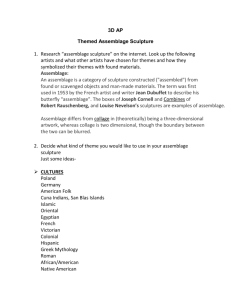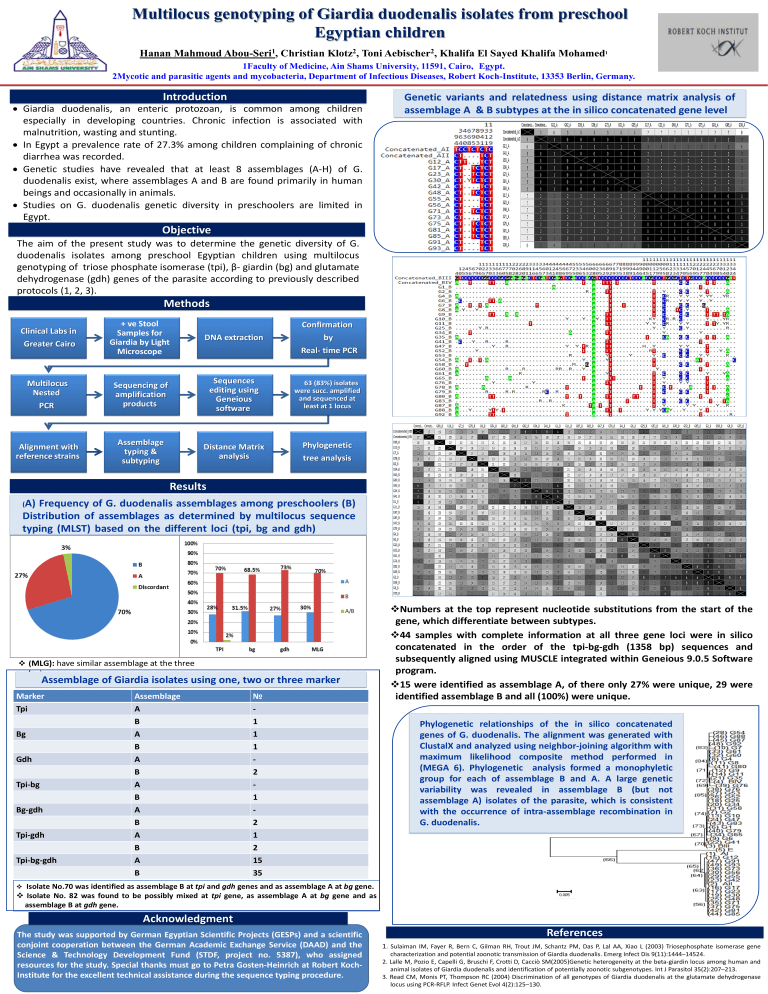
Multilocus genotyping of Giardia duodenalis isolates from preschool Egyptian children Hanan Mahmoud Abou-Seri1, Christian Klotz2, Toni Aebischer2, Khalifa El Sayed Khalifa Mohamed1 1Faculty of Medicine, Ain Shams University, 11591, Cairo, Egypt. 2Mycotic and parasitic agents and mycobacteria, Department of Infectious Diseases, Robert Koch-Institute, 13353 Berlin, Germany. Introduction Giardia duodenalis, an enteric protozoan, is common among children especially in developing countries. Chronic infection is associated with malnutrition, wasting and stunting. In Egypt a prevalence rate of 27.3% among children complaining of chronic diarrhea was recorded. Genetic studies have revealed that at least 8 assemblages (A-H) of G. duodenalis exist, where assemblages A and B are found primarily in human beings and occasionally in animals. Studies on G. duodenalis genetic diversity in preschoolers are limited in Egypt. Genetic variants and relatedness using distance matrix analysis of assemblage A & B subtypes at the in silico concatenated gene level Objective The aim of the present study was to determine the genetic diversity of G. duodenalis isolates among preschool Egyptian children using multilocus genotyping of triose phosphate isomerase (tpi), β- giardin (bg) and glutamate dehydrogenase (gdh) genes of the parasite according to previously described protocols (1, 2, 3). Methods Clinical Labs in Greater Cairo Multilocus Nested PCR Alignment with reference strains + ve Stool Samples for Giardia by Light Microscope DNA extraction Sequencing of amplification products Sequences editing using Geneious software 63 (83%) isolates were succ. amplified and sequenced at least at 1 locus Assemblage typing & subtyping Distance Matrix analysis Phylogenetic Confirmation by Real- time PCR tree analysis Results (A) Frequency of G. duodenalis assemblages among preschoolers (B) Distribution of assemblages as determined by multilocus sequence typing (MLST) based on the different loci (tpi, bg and gdh) (MLG): have similar assemblage at the three loci. Assemblage of Giardia isolates using one, two or three marker Marker Tpi Bg Gdh Tpi-bg Bg-gdh Tpi-gdh Tpi-bg-gdh Assemblage A B A B A B A B A № 1 1 1 2 1 - B A B A B 2 1 2 15 35 Numbers at the top represent nucleotide substitutions from the start of the gene, which differentiate between subtypes. 44 samples with complete information at all three gene loci were in silico concatenated in the order of the tpi-bg-gdh (1358 bp) sequences and subsequently aligned using MUSCLE integrated within Geneious 9.0.5 Software program. 15 were identified as assemblage A, of there only 27% were unique, 29 were identified assemblage B and all (100%) were unique. Phylogenetic relationships of the in silico concatenated genes of G. duodenalis. The alignment was generated with ClustalX and analyzed using neighbor-joining algorithm with maximum likelihood composite method performed in (MEGA 6). Phylogenetic analysis formed a monophyletic group for each of assemblage B and A. A large genetic variability was revealed in assemblage B (but not assemblage A) isolates of the parasite, which is consistent with the occurrence of intra-assemblage recombination in G. duodenalis. Isolate No.70 was identified as assemblage B at tpi and gdh genes and as assemblage A at bg gene. Isolate No. 82 was found to be possibly mixed at tpi gene, as assemblage A at bg gene and as assemblage B at gdh gene. Acknowledgment The study was supported by German Egyptian Scientific Projects (GESPs) and a scientific conjoint cooperation between the German Academic Exchange Service (DAAD) and the Science & Technology Development Fund (STDF, project no. 5387), who assigned resources for the study. Special thanks must go to Petra Gosten-Heinrich at Robert KochInstitute for the excellent technical assistance during the sequence typing procedure. References 1. Sulaiman IM, Fayer R, Bern C, Gilman RH, Trout JM, Schantz PM, Das P, Lal AA, Xiao L (2003) Triosephosphate isomerase gene characterization and potential zoonotic transmission of Giardia duodenalis. Emerg Infect Dis 9(11):1444–14524. 2. Lalle M, Pozio E, Capelli G, Bruschi F, Crotti D, Cacciò SM(2005)Genetic heterogeneity at the beta-giardin locus among human and animal isolates of Giardia duodenalis and identification of potentially zoonotic subgenotypes. Int J Parasitol 35(2):207–213. 3. Read CM, Monis PT, Thompson RC (2004) Discrimination of all genotypes of Giardia duodenalis at the glutamate dehydrogenase locus using PCR-RFLP. Infect Genet Evol 4(2):125–130.



